
Ten years ago, I flew to Monaco to review the Hotel Métropole Monte-Carlo. Or, more specifically, its new pool area, designed by Karl Lagerfeld and dominated by 65 feet of glass panelling featuring black-and-white tableaux of toga-clad models. While it was remarkable in itself, the Chanel maestro turning his hand to this kind of design was not: he was famed for attention to detail in every aspect of his monochrome bubble.
Fashion and interiors have long had a close relationship. Offline, a label’s products have always predominantly been displayed in boutiques as on brand as the clothing and accessories themselves – and the more expensive they were, the fewer on show. But while it once would have been unthinkable for the likes of Fendi to sell beds and blankets alongside Baguette bags, now more and more brands are turning to the home as a new source of revenue.
In recent years it seems that few and far between are the luxury clothing labels that haven’t dipped their toes into the homeware water, and a few have veritably jumped in feet first. Many have tried out safe-bet, entry-level candles and soft furnishings – nothing wrong with that: Cartier, Prada and JW Anderson, you make beautiful cushions – while others have designed suites of products featuring everything from furniture and fabrics to glassware, wallpaper and more. Is an extremely smart Hermès waste paper basket missing from your home? Or what about a pair of Gucci coffee cups, Loro Piana bowls or an ‘I ♡ BAROQUE’ Versace duvet cover?
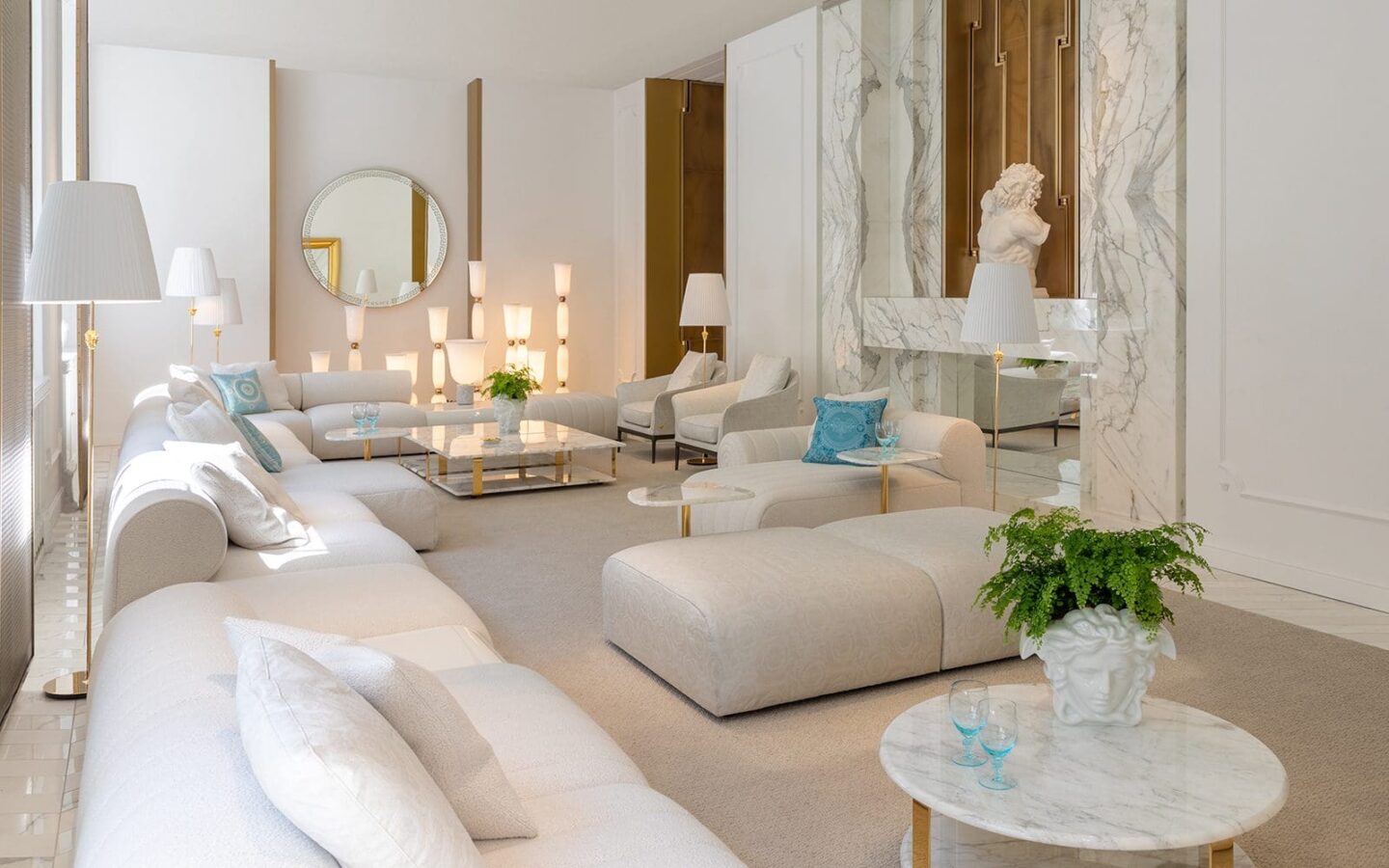
Versace Home at Salone del Mobile 2023
Ralph Lauren is arguably the pioneer of fashion brands moving into homeware. While its clothing line launched in 1967 (with men’s ties), by 1983 the brand was so widely known and loved that Ralph Lauren Home was launched and remains successful to this day. It was the first ‘all-encompassing’ home collection from a clothing designer: furniture and lighting, floor coverings, fabric and wallcovering, fine china, crystal, and silver, decorative accessories, and bed and bath linens.
Fashion lovers didn’t have to wait much longer for Anna Fendi to establish Fendi Casa (1987), and Versace tested out interiors a few years later with textiles and then porcelain. The house now offers, in its own words, “a Versace universe that spans from fashion to homeware”. Armani/Casa launched in 2000 and Gucci Décor came later in 2017. As ever, Mr. Lauren was ahead of the curve but why did he take what would is considered, even now, such a bold step?
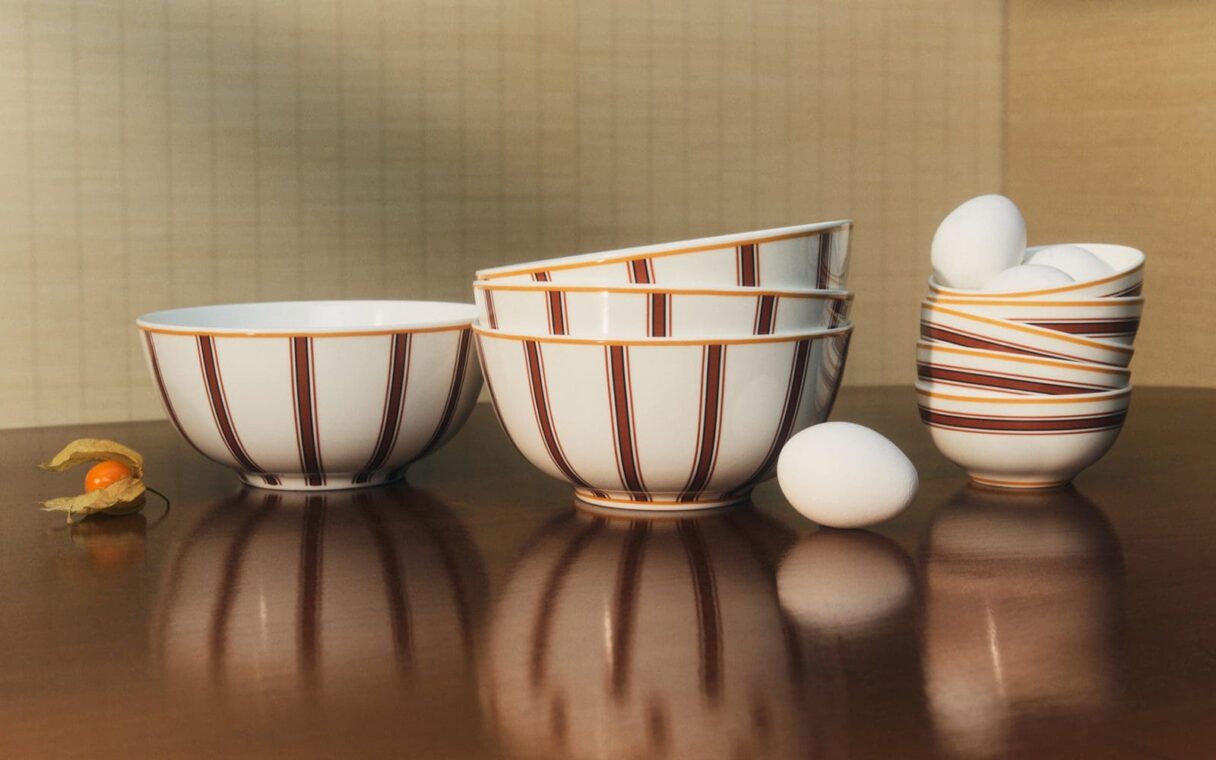
Loro Piana, L’Art de le Table
“Since 1967, our distinctive brand image has been consistently developed across an expanding number of products, price tiers and markets,” says the company’s official bio. Read: if you like our polos and pants, you’ll probably buy chairs and candlesticks. “Reflecting a distinctive American perspective, we have been an innovator in aspirational lifestyle branding.” Ah – ‘lifestyle’ branding. Essentially, successful expansion beyond the original products for which a brand is known.
Fashion houses quickly came to realise, as their competitors tested out homeware, that it is far less cyclical (and, for that matter, less size-ist) than clothing. Customers can snap up items for their home by a favourite brand which won’t look ‘past it’ after a season and the purchase of said items isn’t affected one iota by whether you’re a size 6, 16 or 26. Add to that a boom in interest in interior design as the home becomes an ever greater status symbol and you’re on to a winner for the bottom line.

Etro Home

Dior at Salone del Mobile 2023, © Adrian Dirand
So why are we snapping up items for our homes at a faster rate than ever? Social media has, of course, had significant influence. Brands spend millions developing their online ‘shopfront’, so to speak, and drip-feed their own particular ‘aspirational lifestyle’ products into the feeds of eager customers. According to a Business of Fashion Insights survey, shoppers viewed fashion brands that introduced lifestyle collections more positively overall than those that didn’t.
Platforms like Instagram also give us an opportunity like never before to showcase our homes, a habit which was accelerated by the pandemic. 2013’s word of the year was claimed by ‘selfie’ – all about our outfits – but, by 2020, belonged to the ‘shelfie’, as we sought to distract ourselves from the clutches of Covid by curating a chic bathroom, kitchen or office display. Case in point: Diptyque saw its candle sales grow by 536 per cent in the weeks following the UK’s first lockdown announcement. People connected with – and shopped online for – their homes in a way not seen pre-Covid. They became multi-purpose spaces in which we lived, worked, slept, ate, exercised and educated and, when you’re spending that much time at home, it’s easy for peeling wallpaper or a less-than-perfect cushion to become a preoccupation.
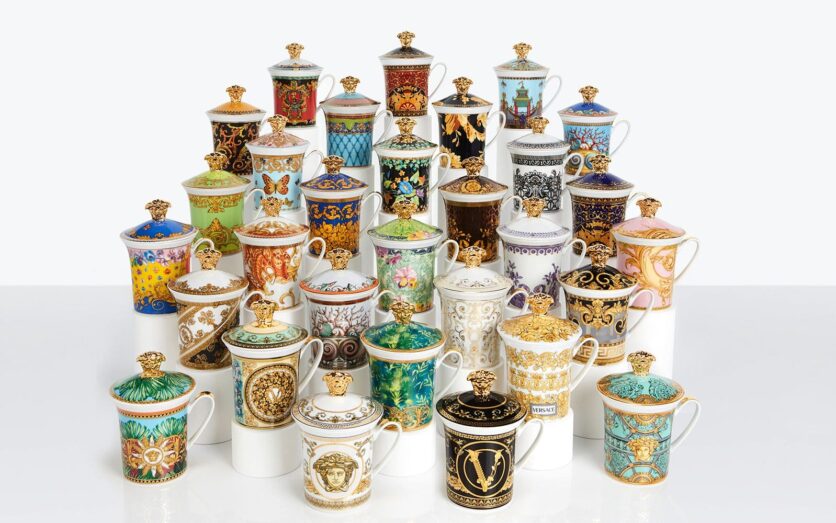
Rosenthal Versace 30th anniversary mug collection
Thankfully lockdowns are a thing of the past but for many, WFH persisted beyond 2020, so it’s no surprise that the UK’s home decor market grew by more than 10 per cent in 2021. According to Mordor Intelligence, it’s expected to rise from $22.3 billion in 2023 to $28.79 billion by 2028, faster than other home retail markets “as customers opt for affordable options to give their homes a new look… The increased time spent time at home prompted consumers to prioritise spending on their house.”
Sensing the way the tides were turning, in November 2020, luxury clothing retailer Net-a-Porter established a lifestyle category (‘Home & Gifts‘), following in the footsteps of Farfetch and Matches Fashion, while Moda Operandi had already launched ‘Home’ back in 2018. “I knew it was our moment when clients started making enquiries into the tea service at our showroom on Madison,” co-founder Lauren Santo Domingo told Vogue. “To me, it made perfect sense; why shouldn’t you be able leave with the opening look from Oscar de la Renta and a beautiful tea set?”
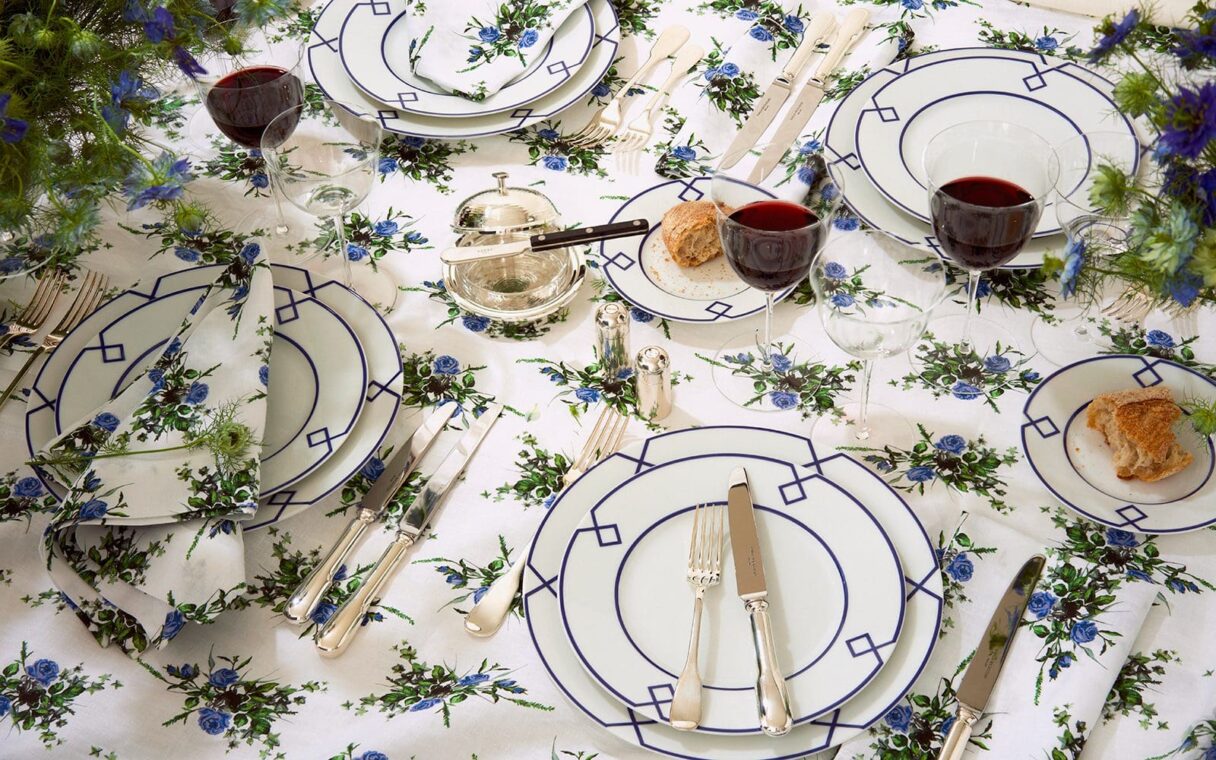
Emilia Wickstead homeware
And what choice we have, especially if you are a devoted fashionista. Matthew Williamson and Jonathan Saunders, London Fashion Week stalwarts in the Noughties and 2010s, have recently launched interiors and furniture businesses, and if you can’t get enough of Emilia Wickstead’s gorgeous prints and patterns, she can also now kit out your kitchen.
“Like our ready-to-wear collections, we take an uncompromising approach to homeware,” the designer explains. “It is important to me that every detail is considered and that the collection has a sense of place and provenance. Our glassware is made in Tuscany by artisan glassblowers, our plates are handmade in Limoges, France, by Leglé and our silverware is made in Sheffield, where cutlery has been made since the 13th century. These are pieces to build on and to be passed down.”
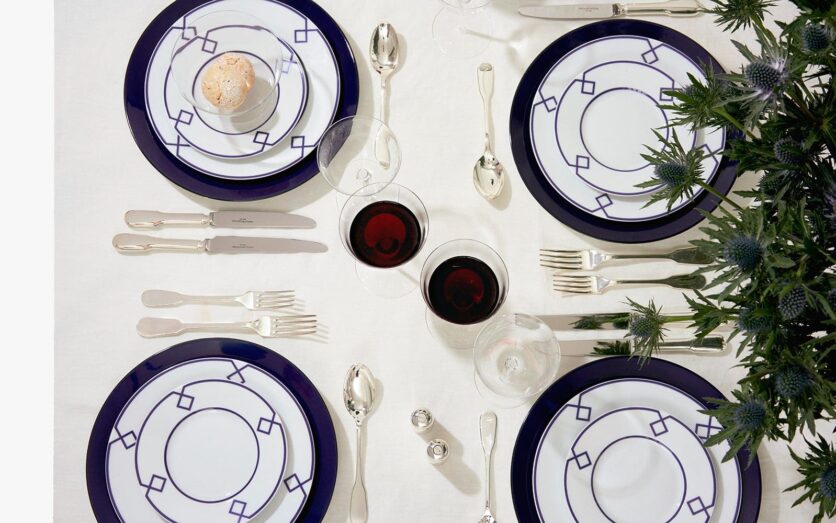
Emilia Wickstead homeware
On a much bigger scale is Salone del Mobile, the renowned furniture and furnishings fair, which takes place in Milan in April each year. Once a largely unglamorous trade fair, its modern significance to fashion brands considering interiors is reflected by the fact that, in 2023, Bottega Veneta closed its Milan flagship for the duration and turned it into an art installation. Has the brand set its sights on a big expansion into this category? Elsewhere, Hermès showcased everything from sofas and chairs to rugs, tableware and lamps, Dior Maison teamed up with Philippe Starck to unveil the Monsieur Dior armchair, and Loro Piana displayed its chic Andes-inspired furniture.

Dior at Salone del Mobile 2023. Image: Adrian Dirand

Dior Boutique Montenapoleone. Image: Adrian Dirand
Loewe added chairs to its homeware range, which already includes fragrances, throws and candles, while Marni teamed up with Serax to launch Midnight Flowers, its first tableware collection. “Our irreverent attitude to mixing different prints and forms creates a language that is unique to the brand,” declares creative director Francesco Rissi. “Despite the apparent dissonances in bringing to life a ready-to-wear collection and a tableware series, there are in fact many subtle touch points. Both leave space to dialogue, materiality, tactility and sensorial emotions.”
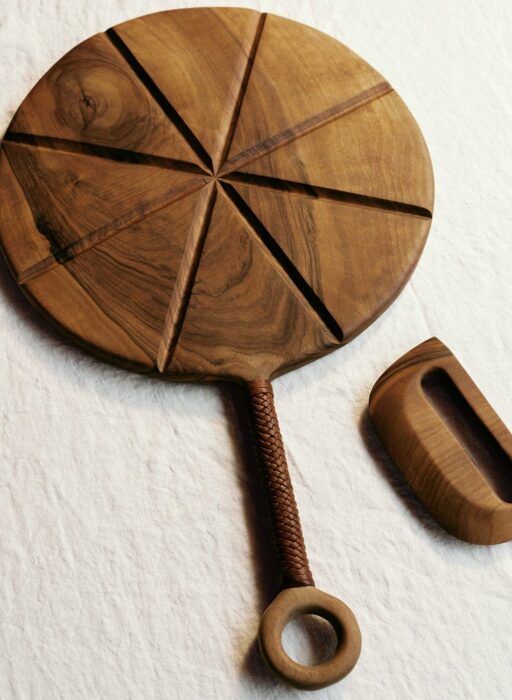
Loro Piana wooden trays
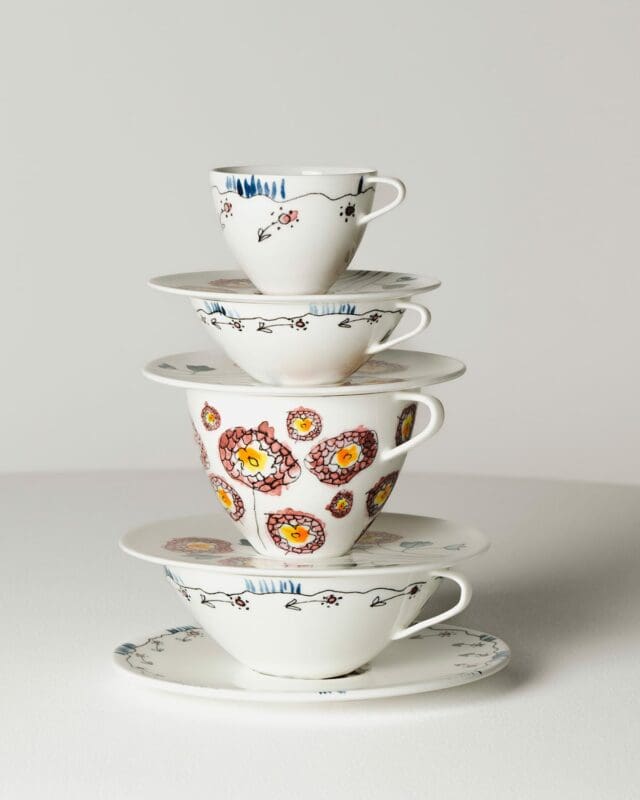
Marni X Serax at Salone del Mobile 2023
Globally, the home design market is worth about $643 billion and, while it did accelerate during the pandemic, it is set to continue growing faster than it did in 2018 and 2019. Luxury brands are now well aware that venturing into homeware can reap rewards beyond the sales of chairs, cushions and candles; BoF Insights has stated that “lifestyle extensions can not only provide fashion brands with access to untapped revenue, but also boost brand equity and help grow customer lifetime value”.
Affluent shoppers generally want to spend the most on textiles, home fragrances and décor – for Generation Rent, especially, these items can make joyful but transient upgrades to a home – and these are the categories that they are most interested in buying from fashion brands specifically, according to BoF Insights.
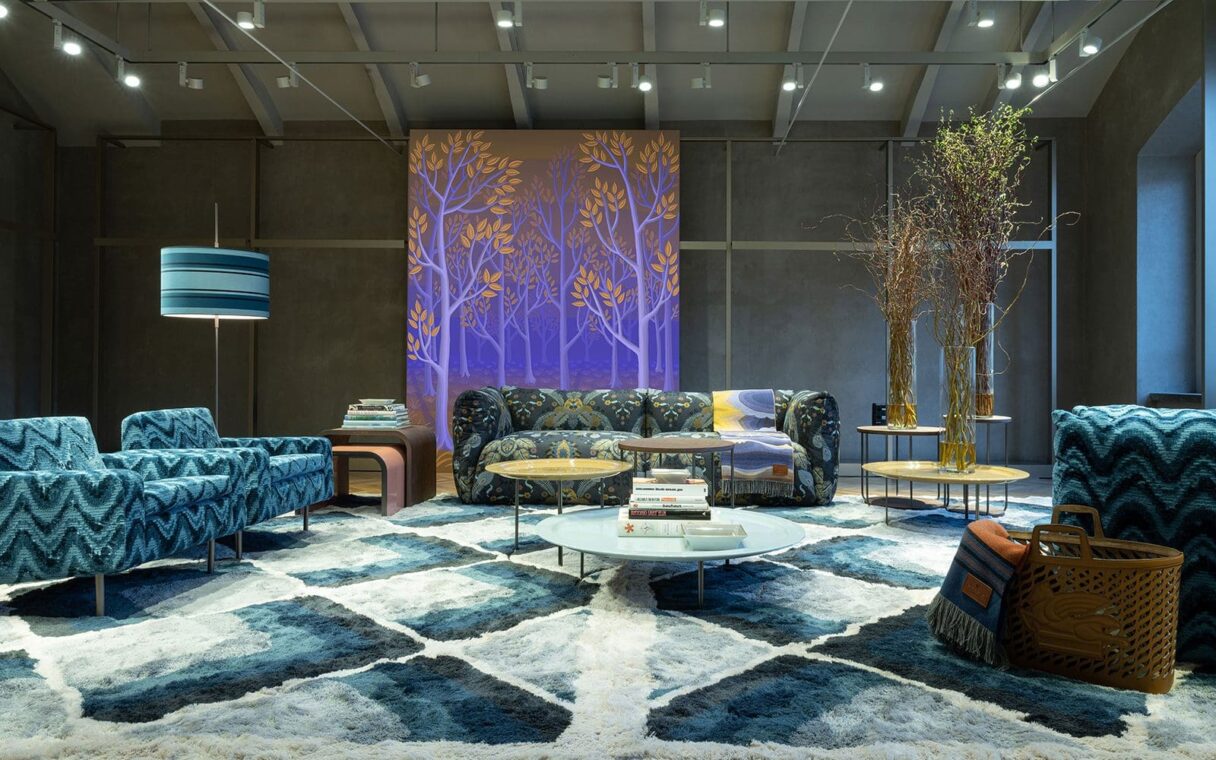
Etro Home
As Henry Holland pointed out, when talking about leaving his fashion label in April 2020 to venture into homeware (specifically ceramics), “You still have to find something interesting and unique to say, and create something covetable that fits into people’s lives”. And if for Dior, Chanel, Gucci et al. that means turning their attention from couture to cups and saucers, we’ll be first in line to upgrade our kitchen cabinets.
Read more: The rise and rise of the celebrity creative director
The post How interiors became fashion’s new frontier appeared first on Luxury London.
